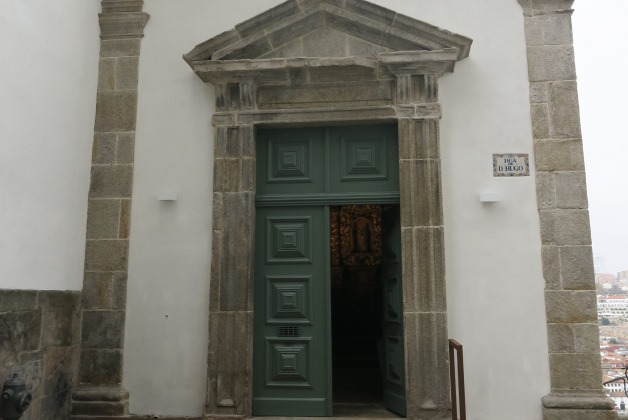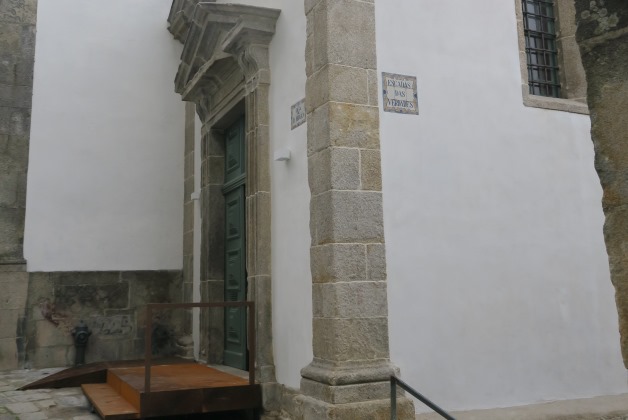Capela Nossa Senhora das Verdades
Monuments
he Chapel of "Nossa Senhora do Postigo da Verdade" (Chapel of Nossa Senhora das Verdades) was being built in 1697 at the expense of the brotherhood of Nossa Senhora do Postigo das Verdades next to the old chapel dedicated to the same Saint, located at the bottom of the Rua dos Cónegos (Rua de D. Hugo). In April of that year and with the purpose of financing the completion of the works of the new chapel, the brotherhood signed the contract with the canon Domingos Gonçalves Prada, who resided in a house contiguous to the chapel, which, in exchange for the necessary funding to finish the works, he could open a direct access to the chapel on the east side. This same document explicitly states that the chapel is owned by the City Hall, as it always was. In August 1701, the canon Domingos Gonçalves Prada sponsored the roof truss, window glasses, flagging, retable and three altar frontals.
The chapel is architecturally built in a Mannerist style - a rectangular plan, double-gable roof, frontispiece delimited by Tuscan pilasters and topped by a triangular pediment.
Inside the chapel, the retable has two overlapping designs, following a reticulated design in a Mannerist style, interspersing four paintings representing São Domingos, São José, São João Baptista and Nossa Senhora da Rosa and an image of Nossa Senhora das Verdades in a niche located at the centre of the retable. However, this statuette is of the utmost importance for the history of art of woodcarving’s evolution in the city of Porto, since it is the only statuette that has survived to the present day, showing a change of taste and style. In fact, if the retable is structurally still in a Mannerist style, the decoration clearly shows the national style, which is evident throughout the retable, in particular in the spiral columns and with the spires that has eucharistic symbols - grapevine leaves, bunches of grapes, phoenixes and naked little boys.
The statuette of Nossa Senhora das Verdades, made of stone from Ançã, represents the Virgin Mary holding in her arms the Infant Jesus and is probably from the fourteenth century, made in the workshops of Coimbra. It was originally in one of the arches of the old city wall - the Postigo das Mentiras.
The chapel is architecturally built in a Mannerist style - a rectangular plan, double-gable roof, frontispiece delimited by Tuscan pilasters and topped by a triangular pediment.
Inside the chapel, the retable has two overlapping designs, following a reticulated design in a Mannerist style, interspersing four paintings representing São Domingos, São José, São João Baptista and Nossa Senhora da Rosa and an image of Nossa Senhora das Verdades in a niche located at the centre of the retable. However, this statuette is of the utmost importance for the history of art of woodcarving’s evolution in the city of Porto, since it is the only statuette that has survived to the present day, showing a change of taste and style. In fact, if the retable is structurally still in a Mannerist style, the decoration clearly shows the national style, which is evident throughout the retable, in particular in the spiral columns and with the spires that has eucharistic symbols - grapevine leaves, bunches of grapes, phoenixes and naked little boys.
The statuette of Nossa Senhora das Verdades, made of stone from Ançã, represents the Virgin Mary holding in her arms the Infant Jesus and is probably from the fourteenth century, made in the workshops of Coimbra. It was originally in one of the arches of the old city wall - the Postigo das Mentiras.


